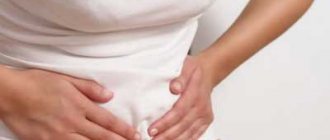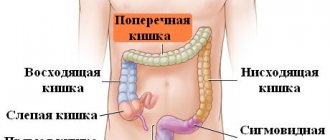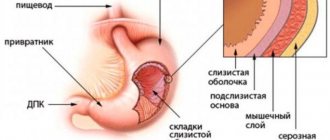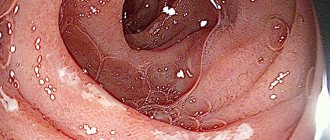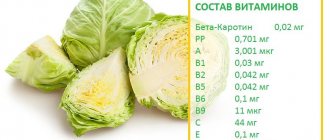Intestinal atony is a pathological condition of the large intestine caused by low tone of the smooth muscles of the intestinal walls, which leads to a slowdown or complete disappearance of peristaltic movements at a normal rate of 15–18 contractions per minute. The main manifestation of intestinal atony is frequent, prolonged constipation, which is difficult to cope with with conventional laxatives.
With intestinal atony, low tone of its smooth muscles is observed
Causes
Most often, intestinal atony develops against the background of general muscle weakness and impaired conduction of impulses, under the influence of which a contraction of the smooth muscles of the intestinal wall occurs with a sedentary lifestyle, after abdominal operations, and prolonged bed rest.
Another common cause of atonic constipation is an unbalanced diet, especially a lack of fiber and other coarse fibers in the diet against the background of an excess of calories, as well as non-compliance with the water regime. The systematic lack of fluid intake is compensated by the active absorption of moisture, which leads to compaction of the stool. The formation of a large number of toxic compounds during the putrefactive decomposition of undigested food remains, in turn, prevents the perception of impulses by muscle cells. Sometimes the movement of feces is limited by mechanical obstacles: diverticula, additional pockets of the colon, adhesions, coprolites (fecal stones), neoplasms, compression of the rectal wall by other organs, etc.
A common cause of atonic constipation is eating foods low in fiber.
Also, a number of factors that influence the processes of neurohumoral regulation of gastrointestinal tract functions are involved in the development of intestinal atony:
- laxative abuse;
- prolonged fasting;
- taking certain medications (painkillers, antacids, antidepressants, antiulcer and antiepileptic drugs, etc.);
- prolonged stress;
- diseases of the anorectal region, prompting the patient to postpone visiting the toilet;
- bad habits: smoking, excessive consumption of alcohol, use of morphine-type drugs;
- obesity;
- intestinal infections and changes in intestinal microbiocenosis;
- helminthiases (the waste products of some helminths contain substances that inhibit peristalsis);
- endocrine disorders and electrolyte imbalances;
- traumatic injuries or degenerative-dystrophic changes in the spine and spinal cord, as well as traumatic brain injuries;
- pregnancy. Intestinal atony in pregnant women is a side effect of the relaxing effect of progesterone on smooth muscles.
Sometimes the tendency to atonic constipation is hereditary. Cases of intestinal atony in close relatives are a reason to think about prevention.
What is the cause of the pathology
In recent years, there has been an active spread of intestinal anomalies. This is due, first of all, to the sedentary lifestyle of the majority of the population, as well as to the consumption of nourishing, but far from healthy food.
Among the main factors contributing to the development of the disease, experts name:
- physical inactivity, that is, lack of movement, which can be associated with both old age and certain diseases. The intestinal muscles are also deprived of the necessary training, as a result of which the intensity of peristalsis decreases;
- high-calorie food. It’s easier for us to snack on fast food than to cook a full meal. Fiber-rich dishes such as cereal porridge and vegetable salads are fading into the background in the modern world. Beneficial intestinal bacteria die as a result of alkalization of the environment, and pathogenic flora takes their place;
- negative emotions and stress. The functioning of the digestive organs is regulated by the central nervous system, and if it is constantly exposed to external “attacks,” this also affects the functioning of the internal organs;
- long-term use of certain medications (antidepressants, antispasmodics, painkillers);
- If you are not accustomed to drinking enough fluids, you are also putting your gut health at risk. Without proper wetting, feces become “stony”, their passage through the intestines is difficult, the muscles cannot cope with such a load, and neighboring organs suffer from excess pressure;
- intestinal infections, dysbacteriosis, helminth damage leads to impaired peristalsis as a result of changes in intestinal microflora and toxin poisoning;
- abuse of alcohol, tobacco, and drug use leads to dysfunction not only of the intestines, but also of all internal organs;
- oncology, malignant tumors provoke active intoxication of the whole body;
- complications after surgical operations on the abdominal organs;
- endocrine diseases (hypothyroidism, excess weight problems);
- hereditary predisposition, as well as old age, pregnancy and menopause in women;
- Frequent enemas and the use of laxatives have a relaxing effect on the intestinal muscles and the subsequent development of the disease.
Forms
Depending on the degree of inhibition of the motor-evacuation function of the large intestine, complete and partial forms of intestinal atony are distinguished. The most common is partial intestinal atony - slowing and weakening of peristaltic movements, which leads to chronic constipation. Complete intestinal atony is characterized by an absolute absence of peristalsis and paralytic intestinal obstruction.
The main manifestation of intestinal atony is frequent, prolonged constipation, which is difficult to cope with with conventional laxatives.
If acute abdominal pain is observed against the background of stool and gas retention, there is reason to suspect surgical pathology - diverticulosis, volvulus, intestinal infarction and other pathological conditions that threaten the patient’s life. The patient should be taken to a medical facility as soon as possible.
Symptoms of intestinal atony
A specific sign of intestinal atony is chronic constipation, which is characterized by a long and persistent course. In some cases, “lazy bowel syndrome” develops, in which the patient is unable to defecate on his own.
In this case, constipation is considered not only a long-term retention of stool, in which there is no bowel movement for two or more days. Possible symptoms of intestinal atony with regular bowel movements are quite varied:
- feeling of discomfort and straining during bowel movements;
- insufficient bowel movement;
- streaks of blood in the stool;
- compaction and hardening of feces;
- so-called Sheep feces - the discharge of a small amount of dense, dry excrement.
The main symptom of intestinal atony is chronic constipation
If there is no stool for more than three days, inflammation of the mucous membrane of the large intestine develops, preventing the absorption of nutrients. At the same time, the optimal balance of intestinal microflora is disrupted: the active proliferation of putrefactive bacteria inhibits the vital activity of beneficial microorganisms. As a result, signs of digestive disorders and general intoxication of the body caused by the absorption of toxic products of putrefaction of intestinal contents appear:
- bloating;
- weakness and apathy;
- irritability and fatigue;
- sleep disorders;
- anemia;
- frequent headaches;
- pallor and/or yellowish complexion;
- pain and feeling of heaviness in the abdomen, disappearing after defecation;
- purulent rashes on the skin.
Constant constipation caused by intestinal atony seriously impairs the patient's quality of life. Patients become lethargic and apathetic or, on the contrary, irritable and touchy; the patient’s emotional lability prevents full communication and social life.
Symptoms
If defecation does not occur for two days or more, then an atonic state of the intestines can be suspected. Any stagnation of feces is accompanied by a disruption of beneficial microflora, the addition of pathogenic or the activity of opportunistic bacteria (Escherichia coli). This leads to inflammation in the large intestine, causing atonic colitis.
The pain varies in nature and is often intermittent
Patients complain:
- for constant bloating, excessive gas formation in the intestines;
- pain in the left or right lateral abdomen, feeling of heaviness;
- weakness.
People who suffer from atonic constipation for a long time experience character changes. They are characterized by nervousness, weakened memory, and women by tearfulness. They usually don't sleep well. Due to poor absorption of dietary iron, signs of anemia increase:
- dizziness;
- pallor;
- headache;
- taste sensations are disturbed, aversion to food is possible.
The addition of the inflammatory process and injury to the intestinal mucosa by hard fecal stones is accompanied by the release of mucus and blood from the rectum (anal fissures). And prolonged stress, sitting on the toilet leads to hemorrhoids. The patient experiences pain in the anus, and with inflammation the body temperature rises.
Features of the course of intestinal atony in the elderly and children
Intoxication of the body during prolonged constipation is especially pronounced in children and the elderly: body temperature may rise to 37 ° C or more, nausea and vomiting may occur. In older people, blood pressure rises sharply.
Intestinal atony is widespread in older age groups. The tendency towards muscle atrophy is one of the manifestations of aging; in addition, older people tend to lead a sedentary lifestyle, and the options for nutritional therapy for the elderly are limited. In particular, it is not recommended to increase your fiber intake without consulting your doctor, since in case of chronic constipation, eating large amounts of coarse fiber foods can worsen the patient's condition.
Atonic constipation, which first appears in old age, is sometimes a consequence of pathological elongation of the sigmoid colon or sclerotic changes in the mesenteric arteries, which can lead to mesenteric thrombosis. To exclude surgical and vascular pathology in intestinal atony in older people, consultation with a phlebologist and proctologist is mandatory.
In a child, atonic constipation may be associated with weaning or stress
In young children, atonic constipation often occurs with a sharp change in diet during weaning, as well as on psychogenic grounds. In this case, intestinal atony must be differentiated from intestinal obstruction and congenital anomalies of the structure of the large intestine.
To prevent “lazy bowel syndrome,” laxatives and enemas should be prescribed to children with great caution and only as prescribed by a doctor. Irritants are contraindicated in young patients; Usually, osmotic preparations based on lactulose and glycerin suppositories are prescribed, which stimulate reflex bowel movements.
Diagnostics
Intestinal atony is diagnosed by a therapist or gastroenterologist based on medical history, study of the patient’s diet and lifestyle, and clinical picture. To identify the causes of weakened tone of the intestinal walls and develop the most effective therapeutic strategy, a comprehensive examination of the intestine using instrumental and laboratory techniques is necessary.
The most informative method for studying the motor function of the large intestine is irrigoscopy - contrast radiography of the colon after a barium enema, which qualitatively visualizes hard-to-reach areas of the intestine that are inaccessible to colonoscopy (folds of the mucous membrane, bends of the colon and sigmoid colon, etc.). If perforation or obstruction of the colon is suspected, a water-soluble contrast agent is administered instead of barium suspension. After bowel movement, a study of the relief of the mucous membrane of the colon is carried out. If necessary, oxygen is pumped into the intestinal lumen to better visualize the inner wall of the intestine.
Irrigoscopy is the most informative method for diagnosing intestinal atony
Endoscopic examination of the colon with biopsy sampling is advisable for differential diagnosis with oncopathology, Crohn's disease and other diseases characterized by specific changes in the intestinal epithelium.
Most often, intestinal atony develops against the background of general muscle weakness and impaired conduction of impulses, under the influence of which a contraction of the smooth muscles of the intestinal wall occurs with a sedentary lifestyle, after abdominal operations, and prolonged bed rest.
A detailed stool analysis (coprogram) provides comprehensive information about the state of the secretory-resorptive function of the intestine and the hepatobiliary system. In case of severe symptoms of intestinal dysbiosis, bacteriological culture of stool is indicated; To exclude parasitic infestation, feces are examined for helminthiases and protozoal diseases.
Diagnostic methods
When visiting a gastroenterologist or proctologist, you need to tell the doctor about your eating habits, past diseases of the gastrointestinal tract and surgical operations, level of physical activity, time of occurrence and nature of the symptoms that caused concern. During the examination, the doctor will pay attention to bloating and decreased peristaltic sounds.
To determine the cause of the development of pathology, laboratory tests are prescribed:
- coprogram and bacteriological analysis of feces make it possible to assess the state of the intestinal microflora and recognize infection with worms;
- the condition of the thyroid gland is studied - the amount of hormones produced directly affects the tone of the digestive organs;
- X-ray examination of the small intestine for the presence of fecal blood clots and to assess motor function;
- using irrigoscopy, the condition of the mucous membrane of the large intestine and the degree of its distension are studied;
- colonoscopy allows you to exclude pathological changes in the walls of the colon and rectum (inflammation, neoplasms); For histological analysis of the condition of the mucosa, a biopsy is performed.
If the diagnostic measures taken do not establish the cause of the disease, the patient is referred to a neurologist, psychologist or psychotherapist, since “lazy bowel” syndrome may be associated with a neuropsychiatric disorder.
Treatment of intestinal atony
The first step to restoring normal intestinal motility should be nutritional correction. For atonic constipation, a study of the patient’s diet and lifestyle is indicated: therapeutic diet No. 3: the basis of the diet is milk-vegetable, while astringent products that stimulate gas formation must be excluded from the menu, as well as the calorie content of dishes must be reduced. First of all, rich soups, smoked meat and fish and canned food, mushrooms, legumes, whole milk, hard-boiled eggs, strong tea and coffee, as well as some fruits and berries - dogwood, blueberries, pears, pomegranate, cabbage, radishes, etc. onion and garlic. To compensate for the deficiency of fiber and pectin substances, the menu includes wheat bran, wholemeal bread, buckwheat porridge, fresh fruits and vegetables, vegetable oils and melons. Particularly useful are apricots, plums, melons, apples, rhubarb and seaweed, which have a mild laxative effect.
Nutrition correction is the first step to restoring intestinal motility
In addition, you will have to seriously limit the consumption of instant carbohydrates - chocolate, white bread, pastries and confectionery. It is recommended to replace sweet carbonated drinks and industrial juices with water, compote and fruit drinks; In this case, you should drink at least 1.5–2 liters of liquid per day. Normalization of peristalsis is also facilitated by a split diet with meals taken at the same time.
Increasing physical activity will help quickly improve bowel movements in patients leading a sedentary lifestyle. A good effect for intestinal atony is provided by race walking, swimming, dancing and yoga, as well as performing special exercises for the abdominal muscles and abdominal massage.
Drug treatment of intestinal atony involves the use of only mild laxatives. Preference is given to drugs with osmotic and prokinetic action and choleretic agents. According to indications, cholinesterase inhibitors may be included in the therapeutic regimen; for severe abdominal pain, antispasmodics are additionally prescribed. In order to prevent intestinal dysbiosis, the use of enemas for intestinal atony is not recommended; It is permissible to use oil suppositories and microenemas to facilitate the evacuation of feces.
Sometimes the tendency to atonic constipation is hereditary. Cases of intestinal atony in close relatives are a reason to think about prevention.
In case of severe intoxication, it is advisable to carry out detoxification therapy and deep intestinal lavage through colon hydrotherapy, subaqueous baths and intestinal irrigation. If intestinal obstruction, neoplasms and anatomical abnormalities of the intestine are detected, surgical intervention may be required.
what is it, causes, symptoms and treatment
Intestinal atony is a disease characterized by a complete lack of organ tone, which leads to dysfunction, in particular to difficulty in the process of bowel movement. Pathology can occur at any age and is often diagnosed in children.
Often the causes of this disorder are poor diet and lack of physical activity. The disease can be the result of surgery, chronic gastrointestinal diseases and many other reasons.
The symptomatic picture is nonspecific, since it includes signs characteristic of many gastroenterological problems. Among the main symptoms, it is worth highlighting bloating, flatulence, pain, upset stool, and sleep disturbance.
The diagnostic process requires a whole range of measures, starting from a thorough examination of the patient and ending with a number of laboratory and instrumental procedures.
Therapy involves the use of only conservative methods, including diet therapy, taking medications (Espumizan, Trimedat, Pancreatin, etc.) and performing therapeutic exercises.
Today, specialists in the field of gastroenterology know many causes of atony, which can act as an independent disease or be a consequence of other pathological conditions.
The main reasons for decreased peristalsis and loss of intestinal tone:
- physical inactivity or insufficient physical activity of a person, which negatively affects the muscles of the walls of the organ;
- poor nutrition - consumption of high-calorie foods, lack of foods enriched with fiber and dietary fiber in the diet;
- damage to the central nervous system;
- dehydration or insufficient fluid intake - the daily norm should be at least 2 liters of water;
- uncontrolled use of medications, in particular antibacterial substances and antispasmodics, antidepressants and tranquilizers, morphine-like painkillers and NSAIDs;
- prolonged exposure to stressful situations or regular nervous strain;
- long-term addiction to smoking, drinking alcohol, and drugs;
- formation of oncological tumors in the intestines;
- abuse or irrational use of cleansing enemas;
- intestinal dysbiosis;
- excess body weight;
- parasitic and helminthic infestations;
- the course of chronic gastrointestinal diseases - very often atony develops with cholecystitis, gastritis and pancreatitis;
- hormonal imbalance, such as during menopause;
- endocrine pathologies - often this process develops against the background of hypothyroidism;
- intestinal infections that negatively affect microflora;
- previous operations on the gastrointestinal tract (this includes an unsuccessful cesarean section) - postoperative intestinal atony is called adhesive disease.
Intestinal atony is a disease that can be diagnosed in children, which is facilitated by the following predisposing factors:
- stressful situations;
- changing the nature of nutrition, for example, introducing complementary foods after breastfeeding;
- consumption of water in small quantities;
- burdened heredity, i.e. the presence of a similar pathology in the medical history of one of the close relatives.
Very often, such a dysfunction of the intestines develops during the period of bearing a child. In such cases, the problem arises due to the fact that the concentration of progesterone increases, which affects the relaxation of smooth muscle tissue of all internal organs.
As for the elderly, atony in most situations appears due to a sedentary lifestyle, obesity, or surgical treatment of diseases associated with the digestive system. It is worth noting that in this case the disease is considered a completely normal phenomenon that accompanies the physiological aging of the body.
Clinical signs are nonspecific - it often happens that people do not pay attention to them, mistaking them for banal intestinal disorders. The severity of symptoms is influenced by the following factors:
- degree of motor impairment;
- features of the human central nervous system;
- age category.
One of the first manifestations of the pathology is prolonged stool retention, at least 2 days. Associated symptoms:
- severe pain during bowel movements;
- change in the consistency of feces - they become denser;
- an increase in the size of the anterior wall of the abdominal cavity;
- increased gas formation;
- the appearance of blood in the stool;
- anemia, which is associated with poor absorption of iron;
- decreased or complete lack of appetite;
- the formation of coprolites, i.e. fecal stones;
- general weakness and fatigue;
- sleep disturbance up to insomnia;
- increased irritability;
- false urge to defecate;
- formation of anal fissure;
- increase in temperature indicators;
- pale skin;
- prolonged belching;
- fluctuations in blood tone values;
- heaviness in the stomach and nausea;
- the occurrence of allergic reactions against the background of reduced immunity;
- feeling of fullness and rumbling in the intestines;
- signs of intoxication of the body caused by harmful substances secreted by feces - putrefactive processes develop in the area of the small or large intestine.
Clinical manifestations occur in patients regardless of age and gender. It is important to remember that if atony is of a secondary nature, the symptoms will be accompanied by signs characteristic of the underlying disease.
What is intestinal atony, how to diagnose the disease and how to cure the disease - a gastroenterologist is competent in such matters. The diagnostic process is based on identifying the etiological factor. The disorder most often appears as a symptom of the presence of a disease.
The diagnostic process must have an integrated approach. Primary diagnosis combines a number of manipulations carried out directly by the clinician:
- studying the medical history of not only the patient, but also his immediate relatives - to establish the most likely pathological factor or genetic predisposition;
- collection and analysis of life history - this includes providing information regarding lifestyle, eating habits, level of physical activity;
- assessment of the condition of the skin;
- palpation and tapping of the abdomen;
- digital examination of the rectum;
- measuring blood tone and temperature;
- a detailed survey - to determine the severity of symptoms and draw up a complete clinical picture of a disease such as atony of the large intestine.
During laboratory diagnostics, the following studies are used:
- general clinical blood and urine tests;
- blood biochemistry;
- microscopic examination of feces for hidden blood, eggs of helminths or parasites, for dysbacteriosis;
- hormonal tests.
Instrumental procedures are informative in diagnostic terms:
- X-ray of the intestine using a contrast agent;
- colonoscopy;
- ultrasonography of the peritoneal organs;
- CT;
- MRI;
- endoscopic biopsy followed by histological examination of the biopsy.
MRI for intestinal atony
Atony of the intestines and bladder may be psychogenic in nature. Additional diagnostic measures include consultations with a neurologist, psychologist and psychotherapist - neuropsychiatric and psychological examination.
Treatment of intestinal atony involves the use of conservative therapeutic methods:
- taking medications;
- diet therapy;
- use of alternative medicine recipes;
- abdominal massage;
- a course of therapeutic gymnastic exercises is selected individually.
Treatment with medications involves taking the following medications:
- prokinetics;
- cholinesterase inhibitors;
- choleretic substances;
- agents that have a laxative effect - there are secretory (of plant or synthetic origin), osmotic and increasing the volume of feces.
Patients are often prescribed the following medications for intestinal atony:
- "Pancreatin";
- "Amiridin";
- "Espumizan";
- "Regulax";
- "Prozerin";
- "Metoclopramide";
- "Amiridin";
- "Cerucal";
- "Trimedat".
The basis of treatment is a diet for intestinal atony, which involves complete avoidance of the following foods:
- baked goods and confectionery products;
- fresh bread;
- smoked meats and canned food;
- fatty meats and fish;
- mushrooms;
- cooking fats;
- rice;
- semolina;
- rich broths;
- onion and garlic;
- spices and hot sauces;
- whole milk;
- legumes;
- White cabbage;
- chocolate and cocoa;
- radishes and radishes;
- strong black tea and coffee;
- carbonated and alcoholic drinks.
Carbonated drinks are prohibited for intestinal atony
For intestinal atony you can use:
- vegetarian first courses;
- buckwheat, barley and millet porridge;
- pasta;
- dietary meat and fish;
- sauerkraut;
- tomatoes and cucumbers;
- zucchini;
- beets;
- apples;
- oranges;
- honey;
- ice cream;
- marmalade;
- jam;
- dried fruits;
- juices;
- seaweed;
- green tea and herbal infusions.
The menu is based on dietary table No. 3, however, all recommendations regarding nutrition are provided only by a gastroenterologist or nutritionist.
Therapy with folk remedies is not prohibited, which involves preparing medicinal decoctions at home based on the following components:
- aloe juice;
- senna leaves;
- rhubarb root;
- buckthorn;
- series;
- flax seeds;
- calamus;
- burdock;
- oregano;
- bird cherry;
- peppermint.
According to individual indications, treatment for intestinal atony is carried out using colon hydrotherapy and subaqueous baths - such procedures are necessary to cleanse the organ.
Avoiding the occurrence of the disease is quite simple - you just need to follow a few simple recommendations. Intestinal atony includes the following preventive rules:
- maintaining a healthy and active lifestyle;
- body weight control;
- avoiding nervous exhaustion;
- taking medications strictly as prescribed by the clinician;
- proper and nutritious nutrition;
- plenty of drinking regime;
- timely identification and elimination of those diseases that can lead to disruption of intestinal function;
- Regular visits to a gastroenterologist and other doctors for a complete preventive medical examination.
The symptoms of intestinal atony that appear and the treatment prescribed by the doctor affect the prognosis. Seeking qualified help helps to achieve complete recovery, since the disease responds well to treatment.
Ignoring clinical signs can lead to the development of complications - intestinal obstruction, which may require surgical intervention to eliminate.
Prevention
Prevention of intestinal atony is not difficult. It is enough to lead an active lifestyle, control body weight, give up bad habits, avoid stress if possible and monitor nutrition, avoiding deficiency of ballast substances, vitamins and minerals. At the same time, it is important to eat small portions 5-6 times a day, adhere to the optimal drinking regime and avoid long intervals between meals.
To prevent intestinal dysbiosis, you should not take antibiotics without consulting your doctor. It is advisable to teach children to go to the toilet at the same time and not suppress the urge to defecate out of false shame at school or kindergarten.
Consequences and complications
Constant constipation caused by intestinal atony seriously impairs the patient's quality of life. Patients become lethargic and apathetic or, on the contrary, irritable and touchy; the patient’s emotional lability prevents full communication and social life. The patient’s appearance also leaves much to be desired: the complexion deteriorates, skin rashes and bad breath appear, and skin diseases may worsen.
Putrefactive processes caused by coprostasis disrupt the balance of intestinal microflora and suppress the immune system, provoke allergic and atopic conditions, and due to disruption of the absorption process in the intestine, people prone to atonic constipation often experience vitamin deficiencies and iron deficiency anemia. In the absence of adequate treatment, intestinal obstruction may develop against the background of intestinal atony, causing severe intoxication of the body.
Video from YouTube on the topic of the article:
Signs of atony
The clinical manifestations of atony are varied and are determined by which muscles are involved in the pathological process.
Bladder atony
Bladder atony can manifest itself in two conditions:
- Urinary incontinence, expressed to varying degrees. Urine may drip or leak when intra-abdominal pressure increases, such as when coughing, sneezing, laughing, or lifting heavy objects. In children of the first years of life, urine leakage can occur with strong crying or screaming.
- No urge to urinate. Even with a full bladder, the patient does not feel the urge to empty it, or they are expressed in a slight feeling of heaviness in the lower abdomen. To empty the bladder, the patient is forced to strongly tense the muscles of the anterior abdominal press. During the act of urination, urine flows in a weak stream. Complete emptying of the bladder is not observed.
Bladder atony is accompanied by urinary incontinence and lack of urge to urinate
Bladder atony is often observed in women in the postpartum period. A woman does not feel the urge to urinate for a long time. With significant overextension of the bladder, a feeling of heaviness may appear in the suprapubic region of the abdomen. The urge to urinate occurs suddenly, the woman does not have time to react to it. This form of bladder atony does not require treatment and goes away on its own 30-40 days after birth. To speed up the restoration of bladder muscle tone, postpartum women are recommended to perform special exercises.
Gastric atony
The main signs of gastric atony are:
- feeling of heaviness and pressure in the epigastrium;
- distension in the stomach;
- pain in the upper abdomen;
- heartburn;
- bad breath;
- belching food and large volumes of air;
- quick satiation with small amounts of food;
- periodic vomiting (profuse vomit, greenish in color).
Gastric atony is manifested by heartburn, pain in the upper abdomen, belching
Sudden and rapidly developing atony of the stomach leads to its acute expansion, which is accompanied by severe abdominal pain, pallor of the skin, heavy cold sweat, arterial hypertension and tachycardia. When palpating the abdomen in the projection of the stomach, a noise in the form of splashing is detected, and with percussion - tympanitis (drumming sound). When a probe is inserted into the stomach, a significant volume of stagnant contents drains through it, which helps to improve the patient’s condition.
Uterine atony
The main symptom of uterine atony is bleeding from the genital tract, which can quickly lead to the development of hemorrhagic shock. When examining the patient, a flabby uterus is determined, with unclear, poorly defined contours.
If a woman is not provided with timely qualified medical care, atonic bleeding may give way to coagulopathic bleeding, in which the leaking blood ceases to form clots (DIC syndrome). This condition is life-threatening.
